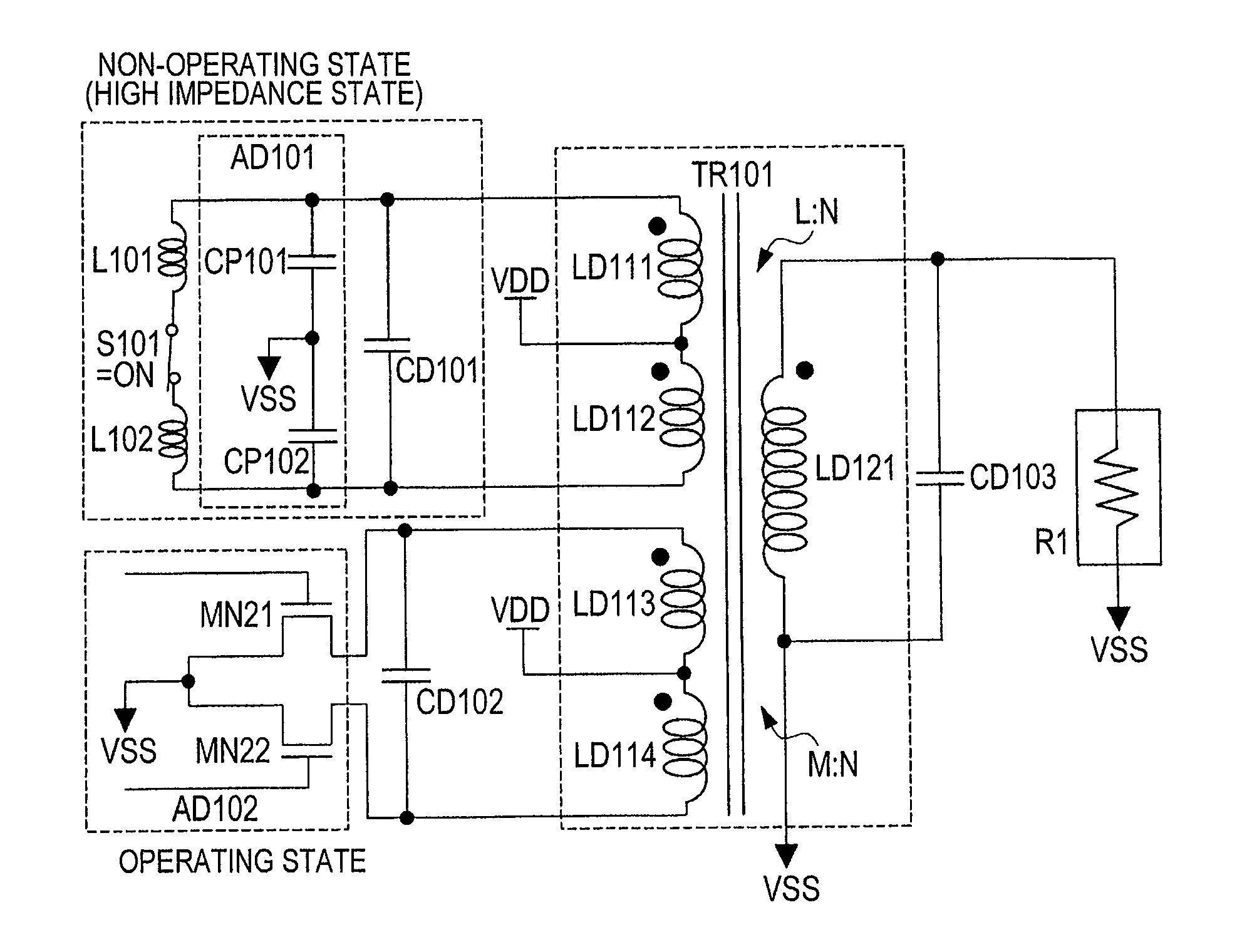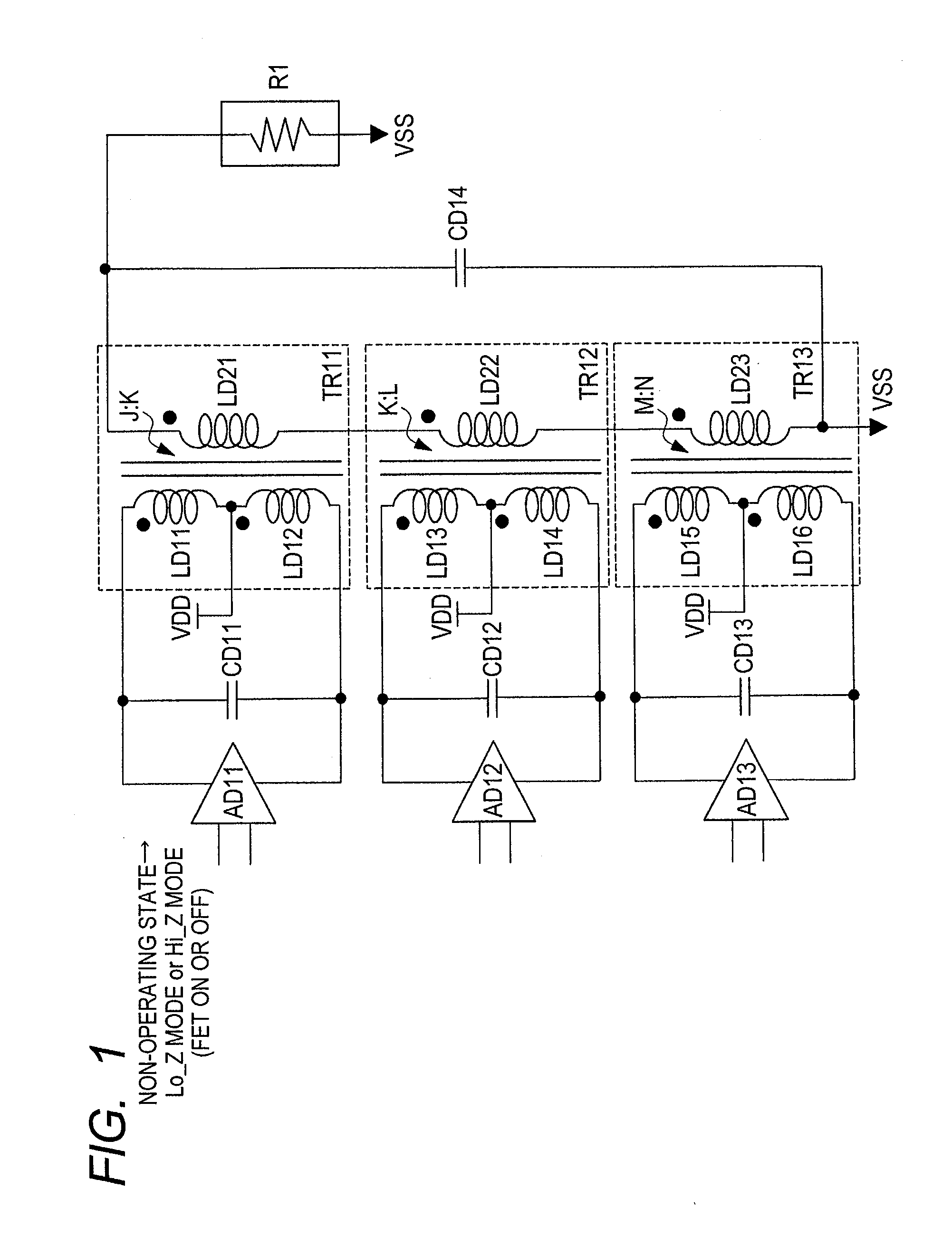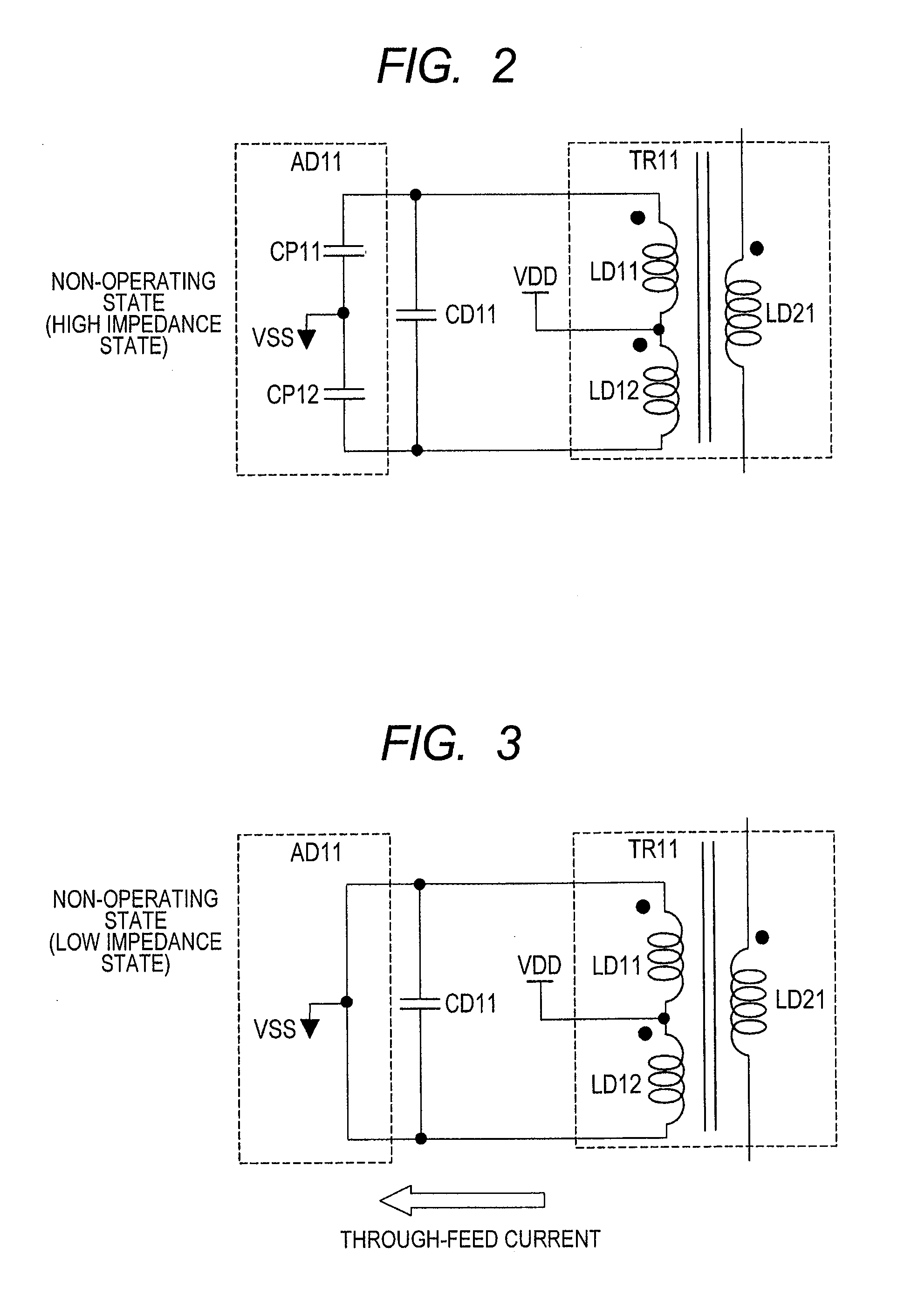High-frequency power amplifying device
- Summary
- Abstract
- Description
- Claims
- Application Information
AI Technical Summary
Benefits of technology
Problems solved by technology
Method used
Image
Examples
first embodiment
Basic Configuration (Type 1) of Main Part of High-Frequency Power Amplifying Device
[0057]FIG. 4 is a circuit diagram showing an example of a differential amplifier in a high-frequency power amplifying device according to a first embodiment of the invention, which is controlled in a non-operating state and an equivalent circuit including a transformer corresponding to the differential amplifier. FIG. 4 shows a differential amplifier AD1, a transformer TR1, and a capacitance CD1 for impedance adjustment and, in addition, an impedance correction block MBK1. The differential amplifier AD1 is constructed by, for example, a pair of differential MOSFETs (not shown) and the MOSFETs are turned off in the non-operating state. In this case, the differential amplifier AD1 is equivalently expressed by source-drain parasitic capacitances CP1 and CP2 of the MOSFETs as a differential pair. One ends of the parasite capacitances CP1 and CP2 (the source side of the MOSFETs) are commonly coupled to a g...
second embodiment
1. Circuit Configuration and Operation of High-Frequency Power Amplifying Device in Plural Power Modes (Type 1)
[0074]FIG. 7 is a circuit diagram showing an example of the configuration of a high-frequency power amplifying device according to a second embodiment of the invention. The high-frequency power amplifying device shown in FIG. 7 has two differential amplifiers AD101 and AD102 and a transformer TR101 having two primary coils and one secondary coil. One of the two primary coils of TR101 is constructed by two coils LD111 and LD112, and the other primary coil is also constructed by two coils LD113 and LD114. LD111 is coupled in series to LD112 via a center tap, and LD113 is coupled in series to LD114 via a center tap. To the center tap, the power supply voltage VDD is supplied.
[0075]The two primary coils of TR101 are magnetically coupled to the common secondary coil LD121 of TR101. The gate width (or emitter area) of a transistor as a component of the differential amplifier AD10...
third embodiment
1. Circuit Configuration and Operation of High-Frequency Power Amplifying Device in Plural Power Modes (Type 2[1])
[0089]FIG. 12 is a circuit diagram showing an example of the configuration of a high-frequency power amplifying device according to a third embodiment of the invention. The high-frequency power amplifying device shown in FIG. 12 has two differential amplifiers AD201 and AD202 and two transformers TR201 and TR202. A primary coil of TR201 has a configuration that two coils LD211 and LD212 are coupled in series via a center tap. Similarly, a primary coil of TR202 has a configuration that two coils LD213 and LD214 which are coupled in series via a center tap. To the center tap, the power supply voltage VDD is supplied.
[0090]Differential outputs of AD201 are coupled to the primary coils LD211 and LD212 of the transformer TR201 and, further, magnetically coupled to a secondary coil LD221 of TR201. Differential outputs of AD202 are coupled to the primary coils LD213 and LD214 o...
PUM
 Login to View More
Login to View More Abstract
Description
Claims
Application Information
 Login to View More
Login to View More - R&D
- Intellectual Property
- Life Sciences
- Materials
- Tech Scout
- Unparalleled Data Quality
- Higher Quality Content
- 60% Fewer Hallucinations
Browse by: Latest US Patents, China's latest patents, Technical Efficacy Thesaurus, Application Domain, Technology Topic, Popular Technical Reports.
© 2025 PatSnap. All rights reserved.Legal|Privacy policy|Modern Slavery Act Transparency Statement|Sitemap|About US| Contact US: help@patsnap.com



